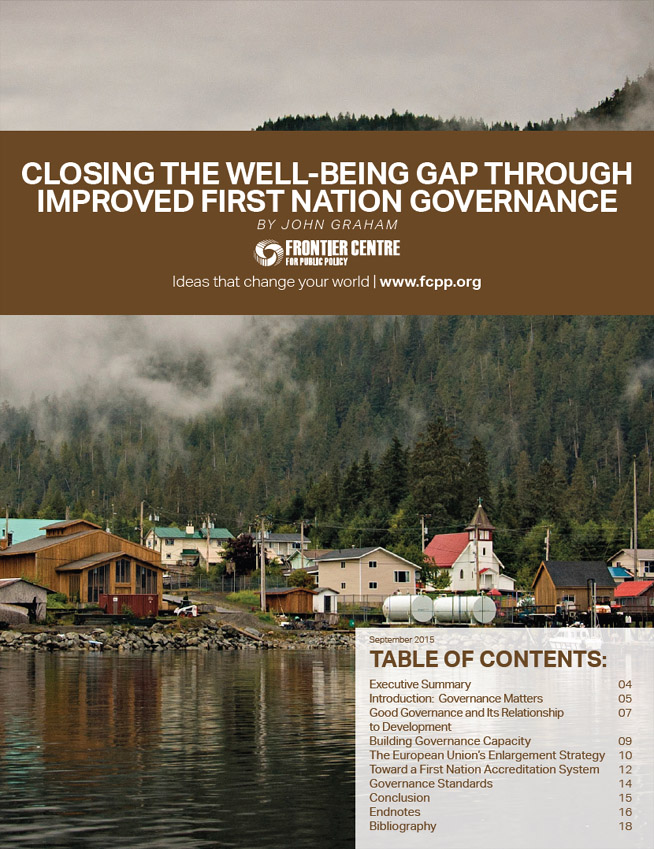Cogent evidence from both Canada and abroad suggests that poor governance is a principal cause of the sorry conditions in many First Nation communities. While the importance of governance is well established, how to improve governance remains a perplexing question. National and international experience shows that sustained governance improvements depend on three factors: political leadership, managerial and technical capacity and broad citizen support. Outside parties can assist with advice, funding and technical expertise but cannot lead efforts to improve governance. It also follows that governance improvements usually take considerable time; rapid governance improvements are possible but rare.
In sharp contrast with the overall dismal record of effecting important governance change is the entry into the European Union (EU) of former Soviet Bloc satellites – Slovenia, Estonia, Czech Republic, Romania, Slovakia, Poland, Lithuania, Latvia, Bulgaria and Hungary – after they had met stringent political, economic and membership criteria. Thus entering the EU to enjoy its many benefits provided the incentive for “a transformation of unprecedented scope and speed,” the kind of change that, according to the World Bank, is a rarity.
An accreditation system for First Nations, if well designed, could have an impact similar to the EU enlargement strategy in encouraging significant and sustainable governance changes. In Canada, accreditation (sometimes called certification) is becoming an increasingly common instrument in many fields of public administration. The idea of applying third-party certification or accreditation in an Aboriginal context has also gathered increased currency in such diverse areas as health, financial management and housing. For an accreditation system to be a positive influence in promoting sound governance among First Nation communities, it would need to be designed by
First Nation communities in collaboration with the federal government and be sensitive to large variations in First Nation communities, e.g., size and location; be managed by an independent First Nation organization (there are several organizations with accreditation experience that could assume this role); have a dedicated funding source and other capacity-building supports for First Nation communities to access in order to achieve accreditation; have tangible and immediate benefits including access to new funding arrangements with the federal government, programs and financial benefits; build on existing systems and standards; have a regular reaccreditation process to ensure ongoing compliance with the standards, and be voluntary.
A governance accreditation system would likely have standards that encompass at least the following: membership; leadership selection and appeals; the relationship of council to members, including the handling of complaints and accountability provisions; strategic planning; the roles of council, council members and senior staff; the functioning of council, including conflict of interest; financial management; human resource management; management of real property and other assets; protection of privacy; code of conduct; the relationship of council to other community bodies such as an economic development corporation; and the monitoring of program performance.
Developing such an accreditation system would be challenging. Nonetheless, this initiative could have a profound effect in altering the strained relationship between the federal government and First Nation communities. Funding is very much an important part of this relationship, and an accreditation system holds the promise of eliminating many of the irritants that plague it. Even more importantly, sound governance in First Nation communities could be a major factor in positioning them to benefit from Canada’s resource economy.



